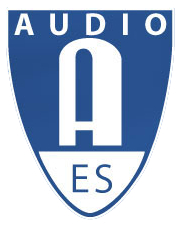
Audio Engineering Society
Chicago SectionMeeting Recap - May 21, 2014
Meeting Date: May 21, 2014
TOPIC:
Spatial Audio – Reconstructing Reality or Creating Illusion?
PRESENTER:
Francis Rumsey
LOCATION:
Shure
Incorporated
5800 W. Touhy Ave, Niles, IL 60714
ABOUT
THE PRESENTATION:
The history of spatial audio is essentially one about the dichotomy between two opposing ideas. There have been those who emphasized the accurate capture and reconstruction of sound fields, and those who simply wanted to make a pleasing and convincing spatial illusion for the listener's entertainment. Just about every position in between these extremes has also been taken at one time or another. The fact remains that with only two loudspeakers it is impossible to reconstruct an accurate sound field, although a large number of perceptually convincing cues can be delivered if the listener is willing to remain fixed in one location. As we move into an era where highly accurate sound field synthesis is possible over a wide listening area, using a large number of loudspeakers, we might expect the gap between the two extremes to be closing. Strangely, however, we find that listeners do not always respond well to the sound quality and spatial characteristics of systems that, on the face of it, ought to come closer to reconstructing accurate sound fields. Listeners can prefer less accurate systems. What is going on here? Could it be that the inherent impossibility of reconstructing accurate sound fields with loudspeakers (because of spatial aliasing, loudspeaker directivity, spacing, room acoustics and other problems) means that even the best approaches will risk creating perceptual results that lie in the "uncanny valley" known in computer animation. This so-called uncanny valley represents a dip in the human cognitive acceptance that leads one to consider as "unnatural" any form of synthetic creation that comes close to being like the "real thing", but does not achieve complete accuracy. We humans suspect things that are almost real (but not quite) of being "weird" or unusual (the zombie, the prosthetic hand). When the artificial reconstruction gets close to the believability threshold, a different group of cognitive responses possibly comes into play. Whereas the limited perceptual cues arising from two-channel stereophony or even 5.1 surround could be accepted by the brain as something far enough from reality to be dismissed as artificial, and thus enjoyed for their own sake, perhaps the more scientifically accurate systems possible today give rise to a different set of human critical faculties that say something like "it sounds like it ought to be real, but something is strange". Perhaps I am wrong, though, and it is simply that the undesirable artifacts or side effects of inadequate sound field reconstruction are simply more unpleasant than those arising from simpler spatial audio systems. Can we cross this complexity threshold successfully, and do we want or need to?
ABOUT
THIS MONTH’S SPEAKER(s):
Francis Rumsey is an independent technical writer and consultant, based in the UK. Until 2009 he was Professor and Director of Research at the Institute of Sound Recording, University of Surrey, specializing in sound quality, psychoacoustics, and spatial audio. He is currently chair of the AES Technical Council, Consultant Technical Writer and Editor for the AES Journal. Among his musical activities, he is organist and choirmaster of St. Mary the Virgin Church in Witney, Oxfordshire.